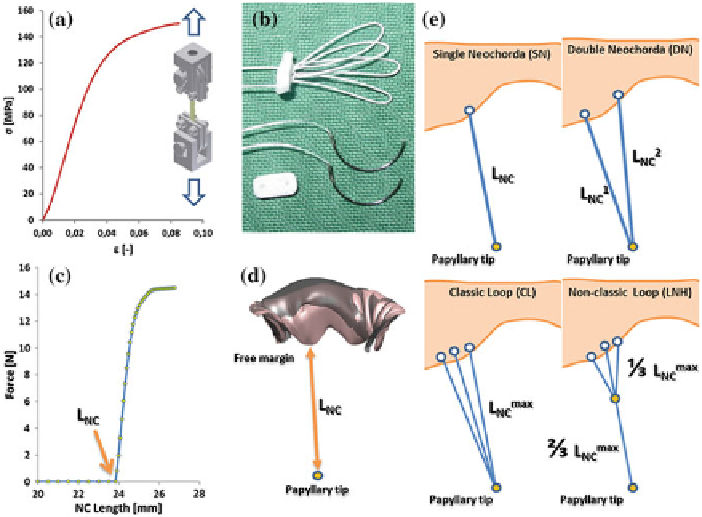Biomedical Engineering Reference
In-Depth Information
2.3 Neochordal Implantation (NCI)
Expanded polytetrafluoroethylene (ePTFE) CV-5 neochordae were modeled as non-
linear springs (ABAQUS SPRINGA elements) with no resistance to compression and
a diameter of 350
m as reported by the manufacturer: force-elongation behavior was
derived from literature data [
19
] consistently with neochordae undeformed length
and cross-section, and the characteristic stress-strain curve of the material (Fig.
2
a).
Subsequently, different clinical NCI procedures were simulated (as schematically
reported in Fig.
2
e) and the proper suture length was determined, for each NC con-
figuration, as follows:
µ
1.
single neochorda
(SN) with suture length L
NC
approximated in millimeters to
the distance, measured in
Phy
model at peak systole, between PM tip and the
selected point of neochordal insertion along the free margin of the MV scallop;
2.
double neochorda
(DN) made of 2 different sutures arising from the same
PM tip and with different lengths L
NC
and L
NC
, separately measured as in SN
configuration;
Fig. 2 a
Stress-strain curve of ePTFE CV-5 sutures as derived from monoaxial traction tests
available in literature [
19
];
b
typical single and loop configurations of artificial neochordae for MVP
repair;
c
computational force-elongation behavior defined for a single ePTFE artificial neochorda
with an undeformed length of 24mm;
d
simulation of the measurement of neochordal length, in the
Phy
model: the distance between the leaflet free margin and the corresponding PM tip was used;
e
schematic representation of the performed NCIs

